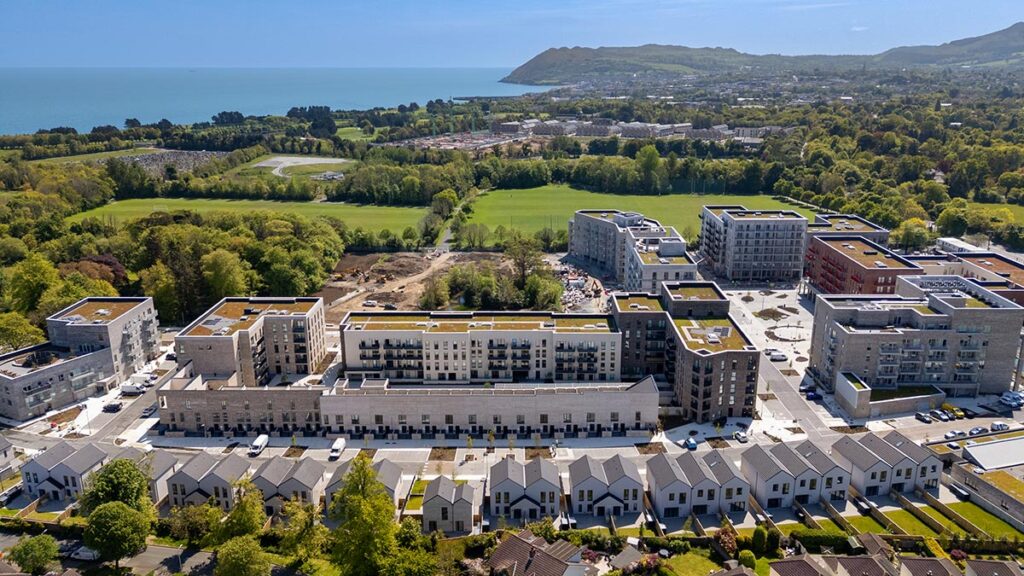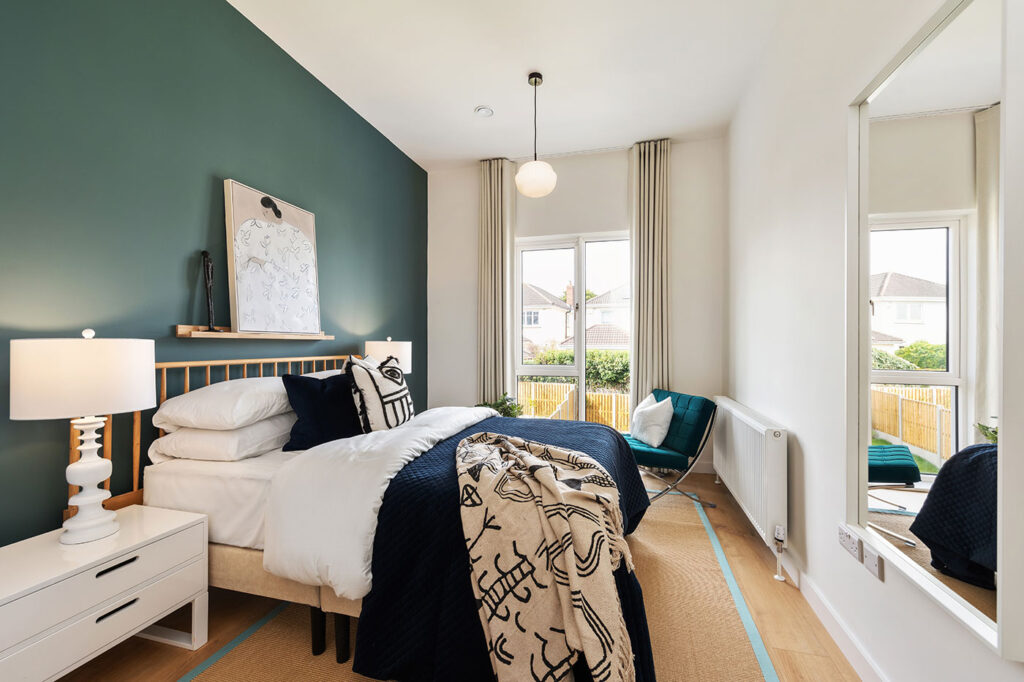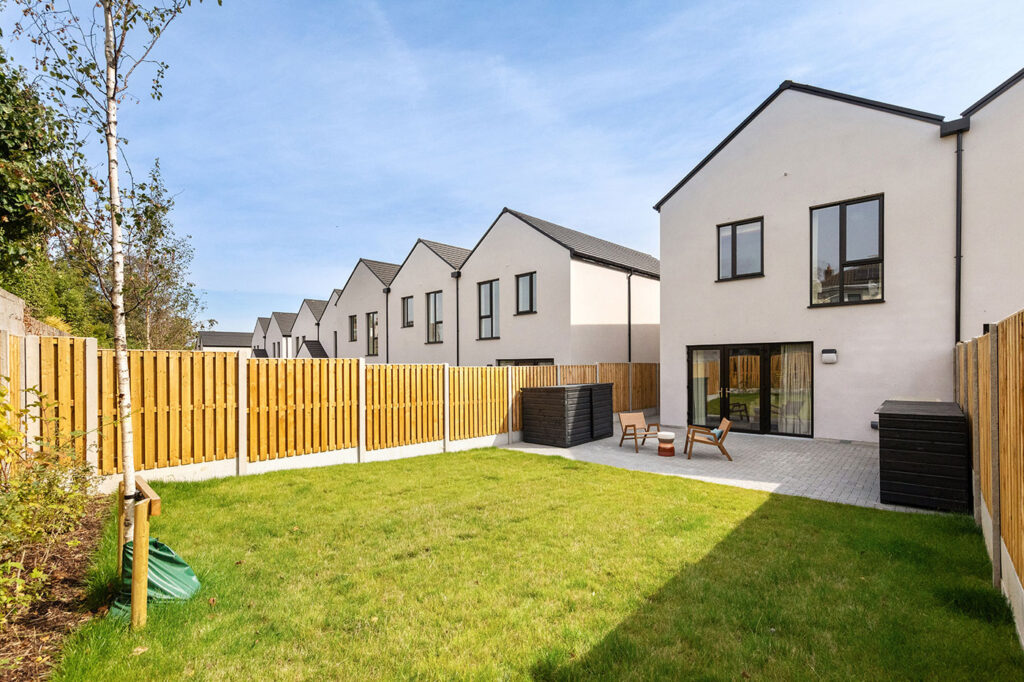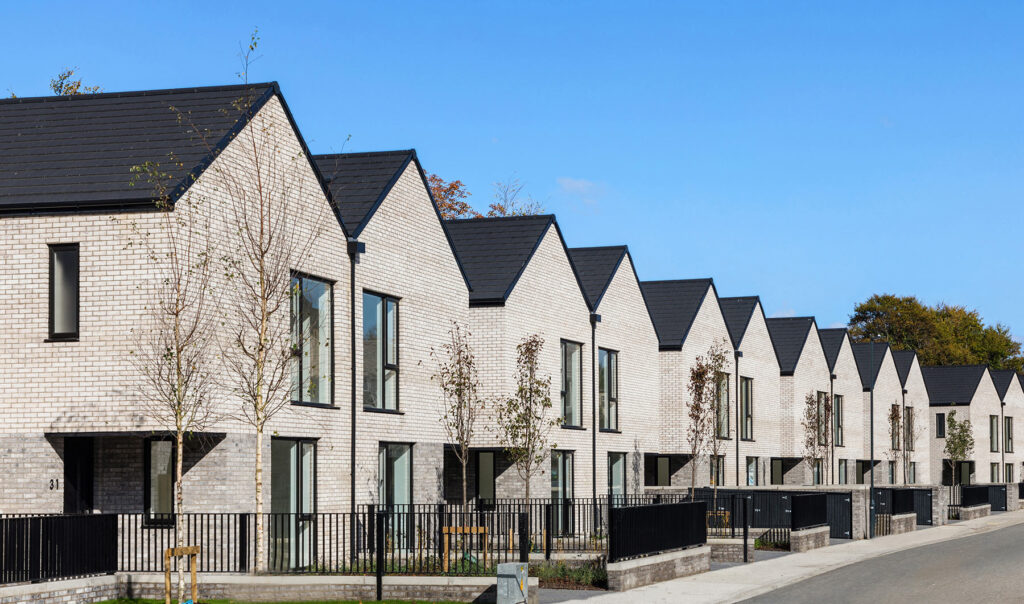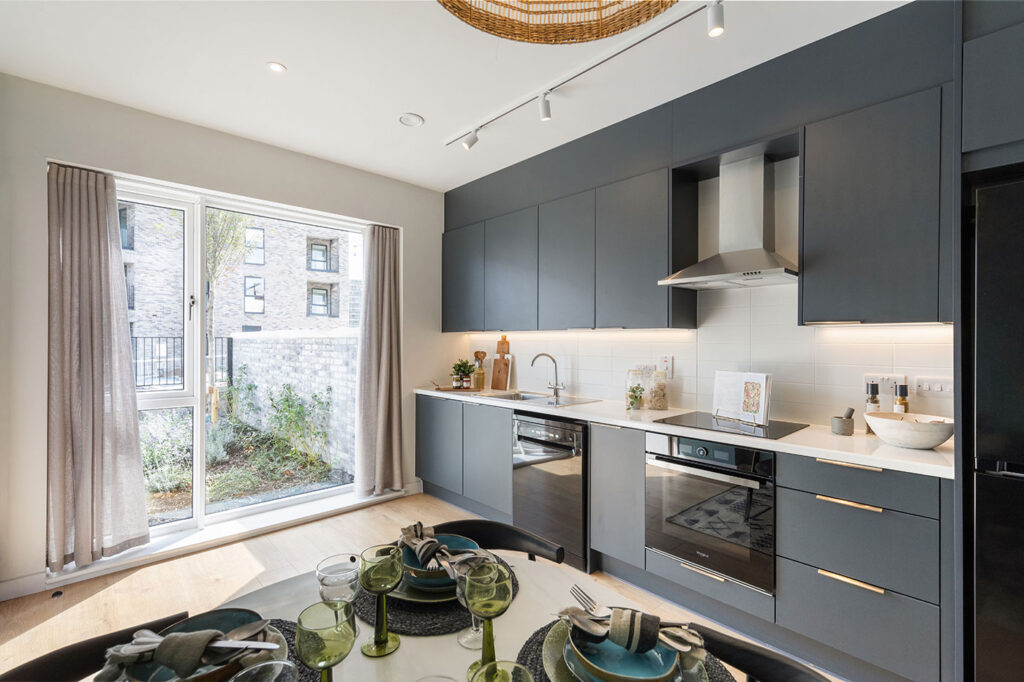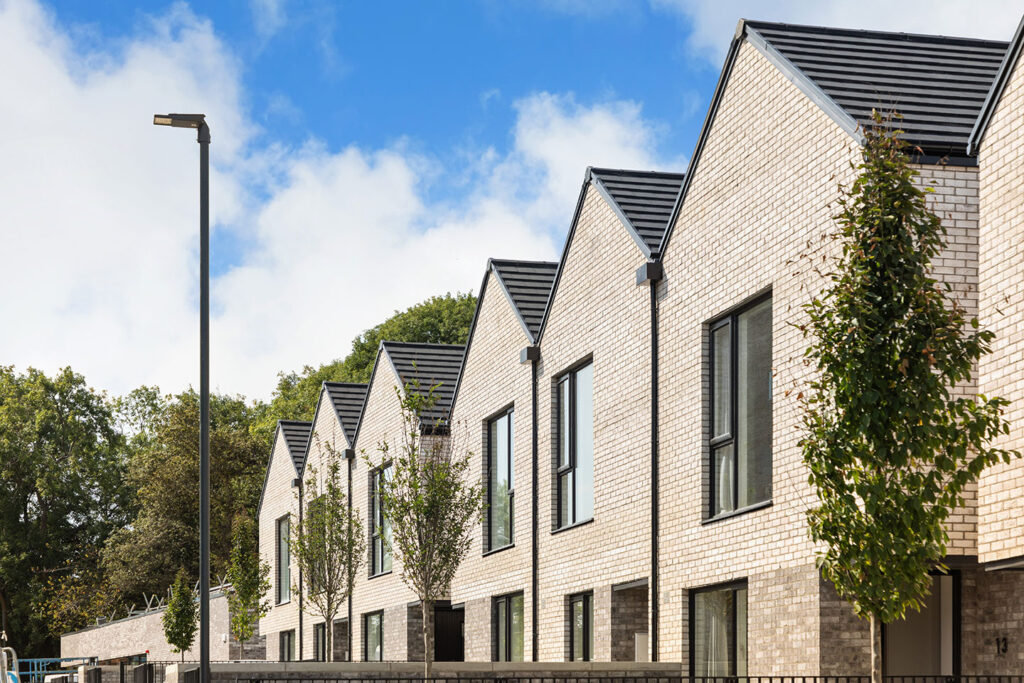Shanganagh Castle in Shankill, Co. Dublin, is one of Ireland’s largest Passivhaus housing schemes. With almost 600 new homes now completed, it represents a turning point in how large-scale developments can meet the combined challenges of affordability, comfort, and sustainability.
For developers, ESG leaders, and policymakers, Shanganagh Castle offers proof that high-performance housing can be delivered at scale, within budget, and aligned with both social and environmental goals.
A New Benchmark for Housing
The development delivers 597 homes, made up of:
- 546 Passivhaus apartments across multiple blocks
- 51 NZEB-certified houses
- A mix of social, affordable, and cost-rental units managed by Dún Laoghaire-Rathdown County Council and the Land Development Agency
What makes Shanganagh Castle unique is not only its scale but also its integration of community amenities. Landscaped play areas, green roofs, cycling facilities, and EV charging points make this more than a housing estate. With the new Woodbrook DART station under construction nearby, it is a connected, sustainable neighbourhood designed for long-term resilience.
Why Passive House at Scale?
Delivering homes to the Passivhaus standard provides clear advantages that extend well beyond energy performance.
- Lower energy demand: Space heating needs of around 17 kWh/m²/yr cut energy bills dramatically compared to standard homes.
- Health and comfort: Airtight construction paired with mechanical ventilation ensures consistent temperatures and healthy indoor air.
- Resilience: Homes designed to the Passivhaus standard protect residents against energy price volatility.
- Long-term value: Developers and funders gain housing assets that remain compliant with tightening building regulations.
At Shanganagh Castle, a typical two-bedroom apartment (83 m²) is expected to have annual heating costs of only €400, with combined hot water and heating costs around €720.
Cost Neutral, Risk Managed
One of the most common misconceptions about Passivhaus is that it is more expensive to build. Shanganagh Castle demonstrates the opposite.
- Precast concrete construction simplified airtightness, reduced site deliveries, and lowered on-site energy use by 60 percent.
- Benchmark apartments were built early and tested, allowing issues to be identified before full-scale rollout.
- Consistent detailing reduced the risk of performance gaps across hundreds of units.
The result was a scheme delivered on budget, ahead of schedule, and to a standard that exceeds current regulations.
The Role of Consultancy
As Passive House consultants, Mosart played a central role in ensuring that every aspect of the design and delivery aligned with certification requirements. From thermal bridge modelling and airtightness detailing through to contractor training and on-site testing, Mosart worked alongside ABK Architects, Walls Construction, and the Land Development Agency to translate performance targets into buildable solutions.
This expertise gave the project team confidence that certification could be achieved, that costs could be controlled, and that risks could be managed at scale.
Environmental, Social, and Governance and Policy Alignment
Shanganagh Castle is not only a housing project. It is also a signal of where the industry is heading.
- Zero emissions legislation: From 2028, all new public buildings in Ireland must be zero emissions, and from 2030 the same applies to all new buildings. Shanganagh Castle demonstrates that these standards are already achievable.
- Green finance: Funders are increasingly favouring projects with verifiable sustainability outcomes. Passivhaus airtightness and energy demand provide hard data that can be used in Environmental, Social, and Governance (ESG) reporting.
- Social value: Affordable, comfortable homes reduce fuel poverty and improve wellbeing, strengthening the “S” in ESG.
Shanganagh Castle shows how sustainability targets can be translated into measurable results that stand up to both regulatory and investor scrutiny.
A Model for the Future
The impact of Shanganagh Castle extends beyond its immediate residents. It has already influenced other large developers, such as Cairn Homes, who have committed to Passivhaus standards in new apartment schemes.
The lesson is clear: Passivhaus is no longer a niche choice. It is becoming the benchmark for large-scale housing across Ireland and Europe. For developers, this represents both a compliance pathway and a market opportunity.
Shanganagh Castle is Ireland’s largest Passivhaus housing scheme, but it is more than a headline about numbers. It is proof that high-performance, low-energy homes can be delivered at scale, without cost premiums, and with benefits that extend from residents to regulators and investors.
Mosart’s role was to ensure that performance targets became reality, helping the project achieve airtightness, comfort, and certification without compromise.
Shanganagh Castle offers a clear message. The future of housing is not just about building more. It is about building better, and Passivhaus has shown it can deliver.
